#Salesforce cloud-based SaaS CRM solutions
Text
SAP Analytics Cloud - ConVista Asia India
Welcome to the SAP Analytics Cloud Community group! SAP Analytics Cloud is a solitary cloud answer for Business Insight (BI) and venture arranging, and prescient investigation. On this page, you will track down accommodating data, best practices, and enablement assets to assist you with your learning process. Associate with specialists, clarify pressing issues, post websites, track down assets, and then some.
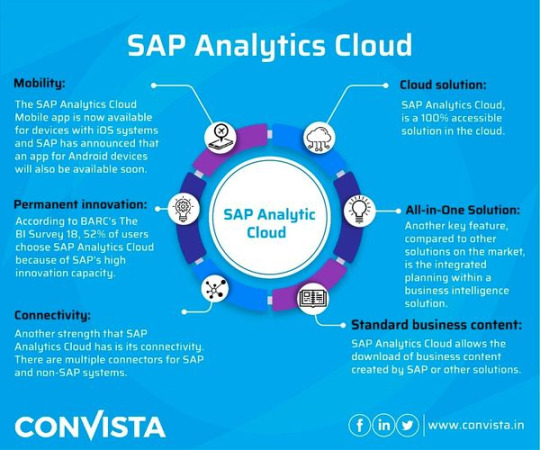
SAP Analytics for cloud is a cloud SaaS-based Business Intelligence instrument given by the SAP company. It was previously known as Business Articles for the cloud. It gives every one of the vital functionalities of an Analytics tool to SAP business users.
This instrument is created by SAP on HANA based BI stage and gives analytics compatibility from information coming from an alternate data set, CRM, and ERP arrangements. You can bring information from Microsoft SQL, ERP arrangements, and Salesforce. Business clients can accumulate the information, and play out the information disclosure, impromptu detailing, and examination to help prescient preparation. SAP Investigation device changes over the crude information from the conditional framework into significant understanding for settling on better choices.
The analytics feature in the SAP device relies upon information calculations, programming, and activities exploration to get information knowledge and to help the business in finding significant data from information coming from different information sources. This data is utilized by all endeavors to perform business arranging and forecasting.
Key capabilities provided by SAP Cloud for Analytics include
Business Intelligence
Planning
Modeling
Augmented Analytics
Smart Transformation
SAP Analytics tool uses machine learning technology to perform data cleaning, identify possible data errors, and suggest filtering options. Modeling features in the Analytics cloud can be used to enhance your data and create hierarchies for deeper data insight.
Key Features of SAP Analytics Cloud
SAP Analytics Cloud provides below key features to end users
Machine Learning capabilities
Integrated Financial and Business Planning
Predictive Analysis
Data Discovery
Automated data cleansing
Data exploration and visualization
Role-Based customization for different users
Use of custom widgets
Applications Integration with on-premise sources
Mobile extension to connect with colleagues via iPhone/iPad
SAP Analytics Cloud is one of the most recommended software for Business Intelligence, these days. When you compare this tool with other similar tools, you can see the vast range of features provided for end users - drag-and-drop reporting, real-time analytics, and BI insights, creating data visualizations, dashboards, interactive stories, etc.
The SAP Analytics Cloud provides below tiers based on its capabilities
Core Capabilities - This includes key capabilities provided by the HANA cloud platform and offers capabilities like data connectivity and modeling, social collaboration, security and administration, web and mobile extensions, and API’s based integration capabilities to integrate apps into existing BI solutions.
Analytic Capabilities - This includes key capabilities of the SAP Cloud platform related to analytics and data processing. These features are focused based on analytics, data cleansing and visualization, use of custom widgets, Predictive analysis capabilities, business, and financial planning features, and use of Machine learning capabilities.
Applications - You can also stitch all the analytic applications into a boardroom and that can allow you to view on multiple screens and multiple metric access to your enterprise metrics. With this, you can also drill to the lowest level of your metrics.
For more information visit: www.convista.caom
#SAP data Analytics#SAP Analytics#SAP Analytics Cloud#SAP Consultant in India#SAP s/4hana finance#SAP S4 for Insurance#SAP ERP Consultant#SAP Consultant in Bangalore#Best SAP Consulting in Asia#The SAP consultant in Asia#The SAP Expert in Asia#SAP Consultant Asia#The SAP Expert
2 notes
·
View notes
Text
Boomi on Azure

Boomi on Azure: Powering Your Cloud Integration Strategy
Organizations rapidly migrate their applications and data to platforms like Microsoft Azure in today’s cloud-centric world. This transition unlocks scalability, flexibility, and cost efficiency. However, ensuring seamless communication between these cloud-based systems and any remaining on-premises applications becomes a critical challenge. This is where Boomi comes in as a powerful iPaaS (Integration Platform as a Service) solution.
What is Boomi?
Boomi is a market-leading iPaaS that provides a unified platform for streamlining application and data integration across various environments. Its key features include:
Drag-and-drop interface: Boomi’s visual interface eliminates the need for complex coding, enabling technical and non-technical users to design integrations.
Pre-built connectors: Boomi offers a vast library of connectors for popular cloud and on-premises applications, including those within the Azure ecosystem.
Data transformation and mapping: Seamlessly transform data formats to ensure compatibility between disparate systems.
Master data management: Manage and synchronize master data across your enterprise.
API management: Build, deploy, secure, and manage APIs.
Why Choose Boomi on Azure?
Deploying Boomi on Azure delivers a powerful combination of benefits:
Azure Integration: Boomi’s deep integration with Azure services (such as Azure Blob Storage, Azure SQL Database, Azure Functions, and more) enables you to build robust, high-performance hybrid integrations.
Global Reach: Leverage Azure’s global data centers for your Boomi Atoms (runtimes). This ensures low-latency integration processes, no matter where your data or applications reside geographically.
Scalability: Easily scale your Boomi deployment within Azure as your integration needs grow.
Security: Azure provides robust security controls and certifications, helping keep your integrations and data safe.
Cost-Effectiveness: Pay-as-you-go pricing models with Azure and Boomi allow you to optimize costs based on usage.
Real-World Use Cases
Here are typical examples where Boomi on Azure adds value:
SaaS Integration: Connect Azure-based services to other SaaS applications (like Salesforce, Workday, etc.) or on-premises systems.
Customer Data Synchronization: Ensure customer data is consistent across Azure-based CRM systems, on-premises databases, and other applications.
B2B/EDI Integration: Connect with external partners and manage electronic data interchange (EDI) transactions.
Microservices Orchestration: Implement API-led connectivity and integrate with various microservices on Azure.
Getting Started with Boomi on Azure
Boomi Account: If you don’t have one, sign up for a Boomi trial account.
Azure Subscription: You’ll need an active Azure subscription to deploy resources.
Boomi Runtime: Deploy a Boomi Atom (a lightweight runtime engine) within an Azure virtual machine or use Boomi’s ARM (Azure Resource Manager) templates for quick Molecule (Kubernetes-based) deployments.
Build Integrations: Start creating your integrations using Boomi’s intuitive drag-and-drop interface.
Boomi’s cloud-native capabilities and its integration with Azure make it an excellent choice for organizations moving towards a cloud-first or a hybrid IT strategy. If you’re looking to simplify your cloud integration challenges, explore the power of Boomi on Azure!
youtube
You can find more information about Dell Boomi in this Dell Boomi Link
Conclusion:
Unogeeks is the No.1 IT Training Institute for Dell Boomi Training. Anyone Disagree? Please drop in a comment
You can check out our other latest blogs on Dell Boomi here – Dell Boomi Blogs
You can check out our Best In Class Dell Boomi Details here – Dell Boomi Training
Follow & Connect with us:
———————————-
For Training inquiries:
Call/Whatsapp: +91 73960 33555
Mail us at: [email protected]
Our Website ➜ https://unogeeks.com
Follow us:
Instagram: https://www.instagram.com/unogeeks
Facebook: https://www.facebook.com/UnogeeksSoftwareTrainingInstitute
Twitter: https://twitter.com/unogeek
0 notes
Text
How Gemini Code Assist Build High-Quality APIs with AI

In contemporary architectures, APIs and application integrations constitute the digital nervous system. APIs are the conduits that link your intelligence apps and models of artificial intelligence to data sources dispersed throughout various systems and environments, and integrations propel intelligent actions throughout your SaaS workflows. To guarantee consistent standards and quality, developing these APIs and integrations, however, frequently calls for specialised knowledge and a significant investment of time and money.
We’re thrilled to share that Gemini Code Assist will be available for use in the public preview of Google Cloud’s Apigee API Management and Application Integration. Building enterprise-grade APIs and integrations is made easier with Gemini Code Assist’s natural language prompts, which don’t require any specialized knowledge.
Gemini Code Assist: AI-driven support Customised for your business
Even though pre-made AI assistants can assist in developing APIs and integrations, the process still takes a lot of time because every business is different and has different needs in terms of schemas, data sources, and requirements. Users will still need to handle these items manually unless the AI assistant comprehends this context.
Gemini Code Assist uses its understanding of enterprise context security schemas, API patterns, integrations, etc. To generate recommendations that are specifically suited to your use case. Moreover, you can iterate on your current API or integration while still in development by utilizing Gemini Code Assist rather than starting from scratch. Finally, new ideas are sparked by Gemini’s proactive suggestions.
Building APIs with Gemini Code Assist
The turnkey API management solution from Google Cloud, Apigee, allows developers to create, manage, and secure APIs for any use case and any type of environment (on-premises or cloud). Apigee can be accessed via the Google Cloud console or by using the Cloud Clode plug-in in popular IDEs like VS Code.
Additionally, you no longer need any specialised knowledge to create reliable, high-quality APIs in Apigee with Gemini Code Assist. If the API specifications that are currently available in API Hub do not satisfy your needs, you can use Gemini to create a new one by just stating your needs in plain English. Gemini Code Assist uses artefacts, like your security schemas or API objects in API Hub, to generate an enterprise-specific specification. Considerable time is saved in the cycles of development and review.
To test and drive multiple development streams simultaneously, you can publish the specification to API Hub using Apigee, which simulates real-world API behaviour.
Additionally, Gemini provides detailed instructions for adding new policy configurations as you’re setting up an API proxy. Last but not least, Gemini also lowers the learning curve during updates and maintenance by offering explanations for your current configurations.
Building automations and integrations with Gemini Code Assist
Google Cloud’s Integration Platform as a Service (iPaaS), known as Application Integration, connects any application proprietary or third-party SaaS with point-and-click ease, automating business processes. With its user-friendly interface, you can create intricate workflows, map data, and expedite processes using pre-made tasks and triggers.
And now, with Gemini Code Assist, any member of your team can just describe their requirements to create Application Integration end-to-end automation flows. For instance, you can use Gemini to have a bug tracking system (like JIRA) automatically update a case when a new issue is created in your CRM (like Salesforce). You have two options: either ask Gemini a question or use the interface’s one-click suggestion feature. Gemini recommends several flows that are specific to your use case based on the prompt and the current enterprise context, such as applications or APIs.
Gemini automatically generates variables and pre-configures tasks based on your enterprise context, ensuring that the integration is ready to use right away. Gemini is not just a prompt-responding tool; it also analyses your flow intelligently and makes proactive recommendations for optimisations, like swapping out connectors or optimising REST endpoint calls. With just one click, Gemini also enables you to expand current flows, greatly minimising the amount of maintenance required.
Because the Application Integration interface is visual, new users can ramp up more easily because the flow is self-explanatory. To speed up the integration’s adoption, Gemini even automatically creates intelligent descriptions based on current configurations.
When developing APIs, integrations, and automation flows, Gemini Code Assist can be a very useful tool.
Code Completion
Gemini Code Assist can provide context-based function, variable, and class completions as you write code. You can avoid mistakes and save time typing by doing this.
Code Generation
To create complete code blocks or functions for frequent tasks, utilise Gemini Code Assist. For example, Gemini Code Assist can assist you in writing a function to call a Google Cloud API.
Having large codebase awareness is especially helpful when working on codebases that already exist. You can give Gemini Code Assist instructions to make significant changes throughout your codebase using natural language prompts. Consider how you could use it to perform thorough code reviews, update dependencies across several files, or add a new feature!
Languages Supported
Verify whether the list of supported languages, which includes over 20 languages like Java, Python, and C++, includes your favourite programming language.
Recall that Gemini Code Assist is available for free trial until July 11th, 2024, so now would be a good time to give it a try and see if it can improve your development process.
Start now
The fundamental building blocks that enable unique experiences with AI models and applications are APIs and integrations. You can considerably lessen the effort involved in developing these APIs and integrations while still upholding your enterprise quality standards by using Gemini Code Assist. Gemini Code is available for use.
Read more on Govindhtech.com
#govindhtech#news#GoogleCloud#geminicodeassist#APIs#technologynews#technology#TechnologyTrends#techtrends#AI
0 notes
Text
Revolutionizing Business Management Software in the Digital Era
The landscape of business management software has undergone a remarkable evolution in the digital age, revolutionizing the way organizations operate and enhancing their overall efficiency and effectiveness. From its humble beginnings in basic bookkeeping to the comprehensive suites of functionalities available today, the journey of business management software reflects the relentless pursuit of innovation and adaptation to meet the evolving needs of businesses worldwide.

Early Innovations in Business Management Software
The roots of business management software trace back to the introduction of computers in the 1950s, marking a significant shift in how businesses handled routine tasks such as payroll and accounting. These early systems, though rudimentary by today's standards, laid the groundwork for future technological advancements.
The Emergence of Enterprise Resource Planning (ERP) Systems
As businesses grew in scale and complexity, the demand for integrated solutions became evident, leading to the development of Enterprise Resource Planning (ERP) systems in the 1990s. These systems aimed to streamline core business processes like manufacturing, inventory management, HR management, and CRM. Industry giants like SAP, Oracle, and Microsoft Dynamics emerged as leaders in providing comprehensive ERP solutions to large enterprises.
The Paradigm Shift with Cloud Computing and SaaS
The early 2000s witnessed a paradigm shift with the advent of cloud computing and Software-as-a-Service (SaaS) models. Cloud-based solutions offer scalability, flexibility, and accessibility, allowing businesses to subscribe to management software over the Internet without the need for extensive infrastructure investments. Platforms like Salesforce, NetSuite, and Workday revolutionized how businesses accessed and utilized software, driving efficiency and cost-effectiveness.
Integrated Business Management Suites: A Unified Approach
In recent years, the trend has shifted towards integrated business management suites that combine various functionalities into a unified platform. Solutions like BusinessEzee Suite offer end-to-end support for sales, finance, marketing, HR, procurement, and more, fostering seamless collaboration and real-time data sharing among different departments.
Benefits of Modern Business Management Software
Modern business management software delivers numerous benefits, including streamlined processes, enhanced collaboration, data-driven decision-making, scalability, and cost savings. By automating tasks, integrating systems, and providing advanced analytics, these platforms empower businesses to thrive in today's competitive landscape.
Future Innovations and Opportunities
Looking ahead, the future of business management software appears promising with advancements in artificial intelligence (AI), machine learning (ML), and blockchain technologies. These intelligent features hold the potential to offer predictive insights, automated processes, and heightened security, further propelling the capabilities of management software in driving business success.
Embracing Technology for Business Excellence
In conclusion, the evolution of business management software showcases the relentless march of technology toward efficiency, innovation, and adaptability. By leveraging cutting-edge solutions like BusinessEzee Suite, organizations can optimize their operations, fuel growth strategies, and seize new opportunities in the digital era, cementing their competitive advantage in the dynamic business landscape.
Overall, the journey of business management software mirrors the ongoing quest for excellence and agility in the ever-changing business landscape, empowering organizations to thrive amidst digital transformation.
1 note
·
View note
Text
How IoT SaaS Solutions Enhance Business Efficiency

Every company relies on business growth to expand its market share by employing high-quality resources. These resources, whether human, material, or operational, are limited yet necessary. With the introduction of IoT, SaaS business growth takes on a new level, as proven by practical uses that improve efficiency.
For More Information: https://technob2b.com/articles/how-iot-saas-solutions-enhance-business-efficiency/
Given that Industry 4.0 is primarily driven by the Internet of Things, the market’s CAGR of more than 16% over a ten-year period (2018–2028) is not surprising.
Optimization of current resources and innovation through new SaaS business models and services are the two main strategies that comprise company development.
IoT and SaaS transform both approaches, allowing firms to increase productivity by optimizing ROI or providing new services based on previously unavailable technology and data.
Now that we know the importance of IoT and SaaS, let’s know more about them in detail:
What is IoT?
The Internet of Things (IoT) refers to the interconnected network of devices embedded with sensors, software, and other technologies, allowing them to exchange data and communicate with each other over the internet without human intervention. Essentially, IoT enables objects to collect and share information, providing valuable insights and automation in various aspects of life.
For example, in smart homes, IoT devices like thermostats, lights, and security cameras can be connected to a central hub, enabling homeowners to control and monitor them remotely via smartphone apps.
In agriculture, IoT sensors can be used to monitor soil moisture levels, temperature, and humidity, allowing farmers to optimize irrigation and increase crop yields.
In healthcare, wearable IoT devices can track patients’ vital signs and send alerts to healthcare providers in case of emergencies.
Overall, IoT technology has the potential to revolutionize numerous industries by enhancing efficiency, reducing costs, and improving the overall quality of life.
Visit Us: https://technob2b.com/
What is SaaS solution?
A Software as a Service (SaaS) solution is a cloud-based software delivery model where users access applications over the internet. Instead of purchasing and installing software locally, users subscribe to the service and access it through a web browser or app.
For example, consider Google Workspace, which offers cloud-based productivity tools like Gmail, Google Drive, and Google Docs. Users can access these tools from any device with an internet connection without needing to install software locally.
Salesforce is a SaaS CRM platform that helps businesses manage customer relationships and sales processes. With Salesforce, companies can track leads, manage customer data, and analyze sales performance—all through a web-based interface.
Another example is Slack, a collaboration platform that enables teams to communicate and collaborate in real-time. Users can share messages, files, and documents, organize conversations into channels, and integrate with other tools—all within the Slack app.
SaaS solutions offer numerous benefits, including flexibility, scalability, and cost-effectiveness. Businesses can leverage these solutions to streamline operations, improve productivity, and stay competitive in today’s digital economy.
Read More Blog: https://technob2b.com/articles/how-iot-saas-solutions-enhance-business-efficiency/
How does IoT improve efficiency?
IoT, or the Internet of Things, enhances efficiency by connecting devices and enabling them to communicate, collect, and exchange data.
Here’s how it works:
Data Collection and Analysis: IoT devices gather data from sensors, machines, and other sources. For example, smart thermostats collect temperature data in buildings.
Remote Monitoring and Control: IoT allows remote monitoring and control of devices. For instance, farmers can monitor crop conditions and adjust irrigation systems from their smartphones.
Predictive Maintenance: IoT enables predictive maintenance by analyzing device data to anticipate failures. This prevents costly downtime. An example is monitoring equipment in manufacturing plants.
Process Automation: IoT automates tasks and processes, saving time and reducing errors. For example, smart lighting systems adjust brightness based on occupancy.
Improved Decision Making: IoT provides real-time insights for better decision-making. For example, retailers analyze foot traffic data to optimize store layouts.
Businesses can use IoT technology to streamline operations, decrease costs, and boost production, resulting in increased efficiency and market competitiveness.
Read Our More Blog:
1 note
·
View note
Text
How IoT SaaS Solutions Enhance Business Efficiency

Every company relies on business growth to expand its market share by employing high-quality resources. These resources, whether human, material, or operational, are limited yet necessary. With the introduction of IoT, SaaS business growth takes on a new level, as proven by practical uses that improve efficiency.
For More Information: https://technob2b.com/articles/how-iot-saas-solutions-enhance-business-efficiency/
Given that Industry 4.0 is primarily driven by the Internet of Things, the market’s CAGR of more than 16% over a ten-year period (2018–2028) is not surprising.
Optimization of current resources and innovation through new SaaS business models and services are the two main strategies that comprise company development.
IoT and SaaS transform both approaches, allowing firms to increase productivity by optimizing ROI or providing new services based on previously unavailable technology and data.
Now that we know the importance of IoT and SaaS, let’s know more about them in detail:
What is IoT?
The Internet of Things (IoT) refers to the interconnected network of devices embedded with sensors, software, and other technologies, allowing them to exchange data and communicate with each other over the internet without human intervention. Essentially, IoT enables objects to collect and share information, providing valuable insights and automation in various aspects of life.
For example, in smart homes, IoT devices like thermostats, lights, and security cameras can be connected to a central hub, enabling homeowners to control and monitor them remotely via smartphone apps.
In agriculture, IoT sensors can be used to monitor soil moisture levels, temperature, and humidity, allowing farmers to optimize irrigation and increase crop yields.
In healthcare, wearable IoT devices can track patients’ vital signs and send alerts to healthcare providers in case of emergencies.
Overall, IoT technology has the potential to revolutionize numerous industries by enhancing efficiency, reducing costs, and improving the overall quality of life.
Visit Us: https://technob2b.com/
What is SaaS solution?
A Software as a Service (SaaS) solution is a cloud-based software delivery model where users access applications over the internet. Instead of purchasing and installing software locally, users subscribe to the service and access it through a web browser or app.
For example, consider Google Workspace, which offers cloud-based productivity tools like Gmail, Google Drive, and Google Docs. Users can access these tools from any device with an internet connection without needing to install software locally.
Salesforce is a SaaS CRM platform that helps businesses manage customer relationships and sales processes. With Salesforce, companies can track leads, manage customer data, and analyze sales performance—all through a web-based interface.
Another example is Slack, a collaboration platform that enables teams to communicate and collaborate in real-time. Users can share messages, files, and documents, organize conversations into channels, and integrate with other tools—all within the Slack app.
SaaS solutions offer numerous benefits, including flexibility, scalability, and cost-effectiveness. Businesses can leverage these solutions to streamline operations, improve productivity, and stay competitive in today’s digital economy.
Read More Blog: https://technob2b.com/articles/how-iot-saas-solutions-enhance-business-efficiency/
How does IoT improve efficiency?
IoT, or the Internet of Things, enhances efficiency by connecting devices and enabling them to communicate, collect, and exchange data.
Here’s how it works:
Data Collection and Analysis: IoT devices gather data from sensors, machines, and other sources. For example, smart thermostats collect temperature data in buildings.
Remote Monitoring and Control: IoT allows remote monitoring and control of devices. For instance, farmers can monitor crop conditions and adjust irrigation systems from their smartphones.
Predictive Maintenance: IoT enables predictive maintenance by analyzing device data to anticipate failures. This prevents costly downtime. An example is monitoring equipment in manufacturing plants.
Process Automation: IoT automates tasks and processes, saving time and reducing errors. For example, smart lighting systems adjust brightness based on occupancy.
Improved Decision Making: IoT provides real-time insights for better decision-making. For example, retailers analyze foot traffic data to optimize store layouts.
Businesses can use IoT technology to streamline operations, decrease costs, and boost production, resulting in increased efficiency and market competitiveness.
Read Our More Blog:
0 notes
Text
Unleashing the Power of Cloud-Based Software: Revolutionizing the Way Businesses Operate
In today's rapidly evolving technological landscape, the demand for flexible, efficient, and accessible software solutions has never been higher. This is where cloud-based software emerges as a game-changer. By leveraging the capabilities of cloud computing, businesses are revolutionizing their operations, empowering teams to work seamlessly from anywhere with an internet connection. In this article, we will delve into the world of cloud-based software, exploring its benefits, applications, and the transformative impact it has on businesses across various industries.
I. Understanding Cloud-Based Software
Cloud-based software, also known as Software as a Service (SaaS), refers to applications hosted and accessed via the internet, rather than installed on local computers or servers. These applications run on remote servers managed by third-party providers, making them accessible to users through a web browser.
II. The Benefits of Cloud-Based Software
Accessibility and Flexibility: Perhaps one of the most significant advantages of cloud-based software is its accessibility. Users can access applications and data from anywhere with an internet connection, enabling remote work, collaboration, and flexibility in operations.
Cost-Efficiency: Traditional software installations often come with significant upfront costs for licensing, hardware, and maintenance. Cloud-based software operates on a subscription-based model, eliminating the need for extensive initial investments. This pay-as-you-go model is particularly beneficial for startups and small businesses.
Automatic Updates and Maintenance: Cloud-based software providers handle all maintenance, updates, and security patches. This ensures that users always have access to the latest features and security measures without the need for manual intervention.
Scalability: Cloud-based solutions can easily scale with the needs of a business. As operations grow, additional users and resources can be added seamlessly without the need for significant infrastructure changes.
Data Security and Backup: Reputable cloud-based providers invest heavily in security measures to protect data. They often have robust backup and disaster recovery plans in place, ensuring that data is safe and recoverable in the event of a system failure.
Collaboration and Integration: Cloud-based software promotes collaboration among team members, allowing them to work on documents and projects in real time. Additionally, many cloud-based applications integrate seamlessly with other business tools, enhancing workflow efficiency.
III. Applications of Cloud-Based Software
Productivity Suites: Cloud-based productivity suites, such as Google Workspace and Microsoft 365, offer a comprehensive set of tools for communication, collaboration, and document management. These suites include email, document creation, spreadsheets, and more.
Customer Relationship Management (CRM): Cloud-based CRM platforms like Salesforce and HubSpot provide businesses with a centralized system to manage customer interactions, sales pipelines, and marketing efforts.
Enterprise Resource Planning (ERP): Cloud-based ERP solutions streamline and integrate various business processes, including finance, human resources, inventory management, and more. This allows for a unified view of operations.
Project Management and Collaboration Tools: Platforms like Trello, Asana, and Slack enable teams to manage projects, assign tasks, and communicate effectively, regardless of geographical location.
Accounting and Financial Management: Cloud-based accounting software, such as QuickBooks Online and Xero, simplifies financial management tasks, including invoicing, expense tracking, and financial reporting.
IV. Overcoming Concerns about Cloud-Based Software
Security: Reputable cloud-based providers invest heavily in security measures, including encryption, authentication, and access controls. They also comply with industry-standard security certifications.
Data Ownership: It's important to review the terms and conditions of cloud-based providers to ensure that businesses retain ownership of their data. Additionally, data export capabilities should be available in case of a transition.
Internet Dependency: While an internet connection is required to access cloud-based software, many applications offer offline capabilities, allowing users to work without an internet connection and sync changes once reconnected.
Conclusion
Cloud-based software is a transformative force in modern business operations, offering accessibility, flexibility, and cost-efficiency that traditional installations often cannot match. By leveraging cloud-based solutions, businesses of all sizes and industries can optimize their operations, drive collaboration, and achieve a competitive edge in today's dynamic business landscape. Embracing the power of cloud-based software is not just a technological upgrade; it's a strategic move towards a more agile and efficient future.
0 notes
Text
Salesforce CRM implementation: 9 steps to a Achieving Success in 2023

In the last twenty years Salesforce has grown to become among the biggest software firms and among the most valuable tech giants around the globe. In the year 2019, Salesforce overtook Microsoft to become the world's top player with respect to SaaS open cloud solutions. In addition, the year 2022 Salesforce's annual revenue topped the all-time record of $26.49 billion.
Presently, Salesforce continues to lead the CRM market, with a an estimated market value of 19.8 percent which is more than the top four competitors together. More than 150,000 businesses around the world trust Salesforce to improve its business operations.
The article below will discuss about the advanced CRM system, analyze alternatives for its implementation and offer the Salesforce CRM implementation plans and calculate the costs for integrating the solution and most importantly, address the issue of how businesses can reap the maximum benefits the benefits of Salesforce CRM.
What is Salesforce CRM?
Salesforce implementation involves it's integration of Customer Relations Management tool within an overall project that optimizes every major business workflow and communications. Salesforce is a sophisticated CRM tool that allows businesses to communicate with their customers using a cloud-based technology. This allows you to have a comprehensive picture of your business's efficiency in regards to operations, finance sales, marketing and more. In each of these areas there are various tools and products.
Integrating a CRM system with business processes lets you increase customer satisfaction, improve performance in the financial arena, and attain other success indicators.
Optional Salesforce CRM implementation
A CRM license is the initial step however that's not all. The most important part of installing Salesforce CRM involves being able to correctly set up and adjust this software to suit your needs, to make it as efficient and effective as is possible.
In general the roles of managers of projects, Salesforce developer, consultant and so on are necessary for full implementation. However, not all companies have the right resources for this.
This is certainly not advised. Particularly, we do not suggest the implementation of Salesforce by yourself in case you don't have the experience and know-how to make this. While this method in-house is appealing and, at first glance, appealing but there is a significant chance that you'll get an ineffective or unscalable solution. As your company expands, you'll be required to redesign the existing technical functions. And in one way or another you'll find the need of experts.
What are the main negatives and drawbacks of this method?
Performance is reduced. The speed and effectiveness in the use of Salesforce Salesforce solution depend on the resources and skills. However, it is certain that this process will be more time-consuming and more challenging than acquiring a skilled technical partner. It's not just about the practical implementation of Salesforce however, it is also about the research aspect.
Projects that are under-estimated. Problems begin with the phase of determining a road map for the process of implementing Salesforce. On one hand team members might want to use the most recent developments and the most cutting-edge technology, but at the same time they could delay the data integration or transfer in the near future. If there are any issues at this point the elimination of them could cost a lot. Processes like migration and data integration require a high level of experience along with a solid understanding of the theory and practical aspects.
limited experience. It is crucial to recognize that even though the internal team might have some knowledge of Salesforce but its members should have experience in implementing specific projects in your particular market and industry.
Step-by-step Guide: Salesforce CRM Implementation Process
For a successful Salesforce CRM implementation for your company the best option is to work with an experienced partner. Salesforce consultants will be with you throughout the process of implementing the system and will study the current state of the business and the workflows that it has and also establish the most important priorities and the values of your company.
All of this will result in suggestions of the most effective solutions that are most effective for the specific project. Furthermore an Salesforce partner will coach the entire team on the essential skills required to efficiently manage the system in the future.
Define Stakeholders, Decision-Makers and the Project Lead
When you hire the external partners, you need to find a project manager from your own organization. This person will act as the liaison to your Salesforce partners and you.
Additionally, it's popular to determine everyone who is directly involved in the project, and whose needs should be met prior to installing Salesforce. Salesforce solution. In this phase it is essential to decide on the key roles of the project, and then analyze the needs of the end-users (those who use the system) and the project manager (one who is accountable for the workflow and outcomes) and a decision maker (one who decides on the timeframes, budget and budget, etc.).
Involvement across all stakeholders, and considering their perspectives will give you an knowledge of the requirements of your business during the process of implementing Salesforce.
Prioritizing Key Goals and Setting Goals Requirements
Once the core roles are in place, it's time to decide the requirements you require and what you'd like from Salesforce. It is crucial to look at the day-to-day activities, establish workflows, and establish the most important objectives. It is essential to establish the short- and long-term goals that the initiative will pursue, resolve the key questions and align the needs of all parties. The primary goal that must be accomplished at this point is the identification of the top priorities as well as an alignment to a common vision and priority of the needs.
The Timeline for Planning and Budget
Salesforce CRM costs for implementation vary dramatically from project to. When you evaluate Salesforce prioritization, knowing the needs of your business and your expectations, it is possible to thoroughly evaluate the costs that could be incurred and, most importantly ensure that you have a balanced and efficient budget for your project. Being a manager you should research the different ways to go about completing your CRM implementation using Salesforce as well as the various estimates of costs.
The next step is to set an Salesforce CRM implementation timeline. Create the most appropriate timeframes for your project and establish deadlines for the efficient processing of tasks and plan dates for important phases like testing, deployment and more.
Gaining insights from end-users
In addition to all stakeholder groups, it is crucial to identify a specific group of users since they are more affected as a outcome of the CRM implementation by Salesforce. Keep in touch with them, provide assistance to them, talk about the quality of data and answer any questions and resolve any concerns.
It is essential to recognize that gathering information from customers and the users is vital for the beginning of every Salesforce CRM implementation as their opinions will help you optimize your workflow and repair the system as quickly as possible.
Maintaining the data
Making sure that data is transferred correctly and in accordance with data that is protected by all rights is vitally important. If data is not properly maintained, it may become unreliable or even compromised. Furthermore, the existence of redundant data within the system can result in an improvement with regard to the standard of services provided. A win-win solution is to create a backup system in the event of issues with the primary system. Be sure to utilize tools to secure and protect your Salesforce information.
The gradual and phased launch
Don't launch the entire system in one go and gradually introduce Salesforce features. Be aware that your team will require time to adjust and the employees need to be educated at each stage to ensure they're more efficient and their workflow is more sophisticated.
Always process feedback and answer all questions. introduce a variety of features slowly and eventually you'll be able to avoid the inefficient Salesforce CRM implementation strategy. A gradual shift to the latest version of Salesforce CRM will allow the team to adjust and adapt the process of implementation more quickly as new features or tools are added.
Salesforce CRM Implementation Review
Also, it is important to constantly check the process of implementation and note any aspects that were not considered or that could be improved. Salesforce won't be efficient when it's not utilized correctly. Take note of your team's feedback and ensure that your employees love working Salesforce. Salesforce software.
The degree of satisfaction with the user directly relates to thisIf your team fully changes into Salesforce CRM you'll see a change in the efficiency of your company overall.
Making sure that the equipment is properly maintained and supported
The Salesforce CRM's scope of implementation doesn't end when the system is launched. It's a process that continues all through the life of a system's company. Changes and updates are constant which is why it is crucial to provide the best Salesforce assistance for the implementation on a regular basis. In the beginning stages your technical partner is to handle this, but following the conclusion of the cooperation the responsibility is assigned the team.
Be sure to test regularly the current workflows, implement changes at a timely time, and continuously upgrade the process. This will ensure that your solution to be always effective and effective.
Salesforce CRM Implementation Cost
First and foremost, you need to understand the difference between the cost for ongoing use of Salesforce and the costs for implementation. There is a direct one-time investment to implement the system, but there are also long-term costs associated with such services like Sales Cloud, Service Cloud, Marketing Cloud, Commerce Cloud, Manufacturing Cloud.
If you decide to adopt an Salesforce solution within your business it is important to determine the most important costs and plan your project budget and maximize spending Certain aspects need to be made available first, while others can be completed later.
The cost of the implementation of a Salesforce system is contingent on the following aspects:
magnitude and the scope of project
needed features and products;
the number of licenses available;
Tools and systems you'd like to include
cost of the cost of Salesforce implementation information from the old CRM
Price of CRM set-up;
the costs of team training as well as the cost of team training and.
Additionally Salesforce CRM's final Salesforce CRM cost is influenced by the amount of time dedicated to implementation, training and adaption.
While it might seem costly however, it's worth it immediately and in full. So, what does it cost to create an effective Salesforce solution? Here are Salesforce cost models for consulting.
Do You Really Need the help of a Salesforce partner to implement CRM?
Salesforce CRM is the most popular solution on the market, however the success of your business is contingent on the hiring of the best implementation partner.
Cloud Analogy We at Cloud Analogy offer advanced CRM Salesforce implementation services and provide complete support at all the crucial steps of integration of Salesforce into the CRM. We also use our experience to improve your eCommerce. Our team can eliminate bottlenecks, improves your business process and in turn, increases your revenue.
0 notes
Text
How SaaS Transforms Business Operations: Real-Life Case Studies

The business landscape is always evolving as one of the major factors driving this change is the use of Software as a Service (SaaS) solutions. SaaS has been a game changer for companies of all sizes, assisting businesses streamline their operations, improve productivity, and attain greater flexibility. We'll examine the ways in which SaaS transforms business operations with actual case studies that show its power to transform.
The Case Study 1. Salesforce revolutionizing customer relationship Management (CRM)
Salesforce is a great illustration for how SaaS can revolutionize business operations. Salesforce, a cloud-based CRM system, has helped companies manage their relationships with customers more efficiently. Through centralizing customer information as well as automating processes and delivering insightful analysis, Salesforce has become an essential tool for companies.
Consider the case of a tech company that was mid-sized that was struggling to handle its expanding customer base. Before they implemented Salesforce it was relying on a mix of spreadsheets and emails to keep track of customer interactions. This resulted in inconsistent data and missed opportunities. It also led to unhappy sales teams.
When they adopted Salesforce the company experienced an amazing change. They now have the ability to monitor the customer's interaction, track leads and automate follow-up procedures. This has not only increased their conversion rates for sales, but also improved satisfaction of customers. Salesforce's real-time analytics enabled them to make informed decisions that resulted in a 20 percent increase in sales in the first year of implementation.
Second Case Study: Slack The future of communication and Collaboration
Slack is a different SaaS successful story which shows how it can transform the way businesses operate, especially in the field of collaboration and communication. Many companies struggled with the lack of efficiency caused by email overload and incoherent communication prior to implementing Slack.
A marketing agency with global reach was slowed down by emails, messages that were not received and communication gaps. They frequently skipped critical information about projects, leading to delays and a lack of clarity among team members.
Following the implementation of Slack The agency's communication and collaboration greatly improved. Members of the team could set up specific channels for every project which ensured that conversations and updates were well-organized and easily accessible. The integration of third-party software improved workflow and the ability to browse within conversations has made finding relevant information effortless. The result was that the duration of projects was reduced by 30 percent, and the employee's satisfaction increased.
Case Study 3: QuickBooks - Revolutionizing Financial Management
Financial management is the foundation of any company and SaaS solutions such as QuickBooks have revolutionized the way companies manage their finances. QuickBooks offers user-friendly software for invoicing, accounting, and financial reports.
A family-owned small restaurant was faced with problems with its finances because of manual bookkeeping and lack of insight into their financial records. They had to be careful of revenue, expenses as well as cash flows.
With QuickBooks they were able to gain a complete financial management software that streamlined bookkeeping as well as automated invoice generation and gave real-time financial information. They were able to monitor how much cash they had, find ways to save money, and make prompt payments to suppliers. Within one calendar year the eatery witnessed an increase of 15% in its profitability due to a better control of finances.
Case Study 4: Dropbox - Revolutionizing File Management
File management is an issue for organizations, especially companies that deal with huge amounts of data. Dropbox is an excellent illustration that shows how SaaS can revolutionize file management by making it more effective and more collaborative.
A design firm was having trouble with issues with file versioning and slow file transfers and problems communicating with customers. This resulted in delays, confusion and ultimately, customer discontent.
Following the implementation of Dropbox it was possible for the agency to save, access, and share files in a seamless manner. The control of versions eliminated any confusion and the capability to collaborate in real-time helped improve collaboration. This did not just speed up the delivery of projects by 20% but also increased the satisfaction of clients and increased recommendations and returning business.
In the end, these actual examples demonstrate the potential of SaaS in transforming business operations. The possibilities include improving the management of customer relationships, enhancing collaboration and communication or streamlining financial management or making file management easier, SaaS solutions have become indispensable for businesses looking to prosper in today's hectic digital world. As technology advances in the coming years, the role of SaaS in changing business processes will only increase and it will become a crucial investment for businesses that want to stay efficient and competitive in the current business climate.

0 notes
Text
Revolutionizing Business: The Power of SaaS Solutions
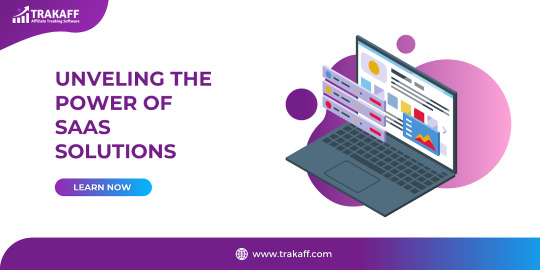
In today’s time SAAS has become a popular way through which businesses utilize and access software applications. In this blog, we will talk about SAAS, exploring its evolution, its advantages and its role in shaping the future of software.
Understanding SAAS
Software as a service (SAAS) refers to the cloud computing model where software applications are hosted and delivered over the internet on a subscription basis. Unlike traditional software distribution methods where software is purchased and installed on individual computers, SaaS applications are centrally hosted on cloud servers, allowing users to access them through web browsers.
The evolution of SAAS
The roots of SAAS can be traced back to early days of computing when mainframe computers were accessed remotely by multiple users. However, the modern SAAS model gained traction in the late 1990’s and early 2000’s when internet connectivity became more widespread and reliable. Salesforce , founded is considered a pioneer in the SAAS industry with their cloud - based customer relationship management (CRM) software.
The evolution of SAAS has been closely tied to the development of cloud computing infrastructure.
Advantages of SAAS
Accessibility and convenience:
One of the primary advantages of SAAS is accessibility, the user can access SAAS from anywhere with an internet connection.
Cost efficiency:
SAAS eliminates the need for upfront software and hardware investments.
Automatic Updates:
SAAS providers handle software updates and patches, ensuring that users always have access to the latest features and security enhancements without any manual intervention.
Reduced it burden:
IN house software installation requires significant I.T support for deployment, maintenance and troubleshooting. With SAAS the burden is shifted to the provider, allowing the IT team to focus on more important tasks.
Cross device compatibility:
SAAS applications are designed to work seamlessly across various devices and operating systems, enhancing user experience and productivity.
Collaboration and sharing:
SAAS applications often include built-in collaboration features, enabling multiple users to work on the same document or project, regardless of their geographical location.
Data security and backups:
Reputable SAAS providers invest heavily in security measures, data encryption and regular backups to protect user data from loss and unauthorized access.
Environmental impact:
SAAS has the potential to be environment friendly as it reduces the need for individual hardware components and promotes resource sharing in data centers.
Challenges and considerations
Data security concerns:
SAAS involves placing sensitive data in the cloud which raises concern about data privacy. It’s crucial to choose a reputable provider with good security measures.
Dependency on providers:
Users rely heavily on SAAS providers for service availability. Disruptions on the provider’s end can impact the user's ability to access and use applications.
Limited customization:
SAAS applications are designed to cater to a large audience but which might result in limitations when it comes to customization to fit specific business processes.
Long terms cost:
While SAAS can be cost effective in the short term, long term subscription fees might accumulate and surpass the cost of traditional software licenses.
Internet dependency:
SAAS applications require a stable internet connection. In areas with unreliable connectivity, accessing these application can be challenging.
The future of SAAS:
The SAAS industry shows no sign of slowing down. As technology advances, several trends are shaping the future of SAAS.
AI AND AUTOMATION INTEGRATION:
SAAS providers are incorporating artificial intelligence and automation into their offering, enhancing user experience through predictive analytics, intelligent recommendations and process automation.
Specific niche market solutions:
The SAAS model is expanding into various industries with solutions to specific verticals such as health care, finance and manufacturing.
Edge computing:
With the rise of edge computing, SAAS applications are expected to process data closer to the source, thus improving performance.
Focus on user experience:
SAAS providers are putting great emphasis on user interface, seamless onboarding processes and responsive customer support.
Conclusion
Software as a service (SAAS) has undeniably revolutionized the way software is delivered and accessed. Its accessibility, cost - efficiency, scalability make it an attractive option for businesses of all sizes. While challenges exist, the advantages of SAAS, coupled with ongoing technological advancements, indicate that the SAAS industry will continue to thrive and shape the future of software consumption.
0 notes
Text
Dell Boomi SAP Integration

Dell Boomi: The Key to Streamlined SAP Integration
SAP systems are the central data and process backbone of countless enterprises worldwide. However, to fully realize their potential, SAP environments need to seamlessly communicate with various other applications and systems—both within the organization and beyond. This is where Dell Boomi comes in, providing a powerful solution for achieving robust and efficient SAP integration.
Why Integrate SAP with Dell Boomi?
Enhanced Data Flow: Boomi establishes a unified data highway, enabling data to move freely between SAP and your broader enterprise ecosystem. This boosts efficiency, reduces errors due to manual data entry, and empowers better decision-making based on consolidated information.
Process Automation: Orchestrate complex business processes that span SAP and external systems. Dell Boomi lets you automate everything from order-to-cash workflows to complex data synchronization and supply chain management.
Accelerated Cloud Migration: If you’re transitioning to SAP S/4HANA or embracing cloud applications, Boomi simplifies the integration process. You maintain the power of your SAP core while leveraging the scalability and innovation of the cloud.
Reduced IT Complexity: With Dell Boomi’s intuitive, low-code approach, integration projects become significantly faster and easier to manage. This frees up your IT resources to focus on higher-value initiatives.
How Dell Boomi Integrates with SAP
Dell Boomi provides a specialized SAP connector, offering several methods for seamless integration:
BAPIs and RFMs: Boomi directly communicates with SAP Business Application Programming Interfaces (BAPIs) and Remote Function Modules (RFMs). This is ideal for real-time interaction and triggering specific SAP processes.
IDocs: Boomi supports the robust exchange of Intermediate Documents (IDocs), a standardized format within SAP for business data transfer. IDocs are vital for asynchronous data exchange and event-driven processes.
Web Services: For more modern integration scenarios or exposing parts of your SAP landscape with controlled access, Boomi can utilize SAP’s web service technologies (SOAP or RESTful APIs).
SAP NetWeaver Gateway Expose SAP business data in a RESTful manner for easy consumption by the Boomi platform.
Boomi’s SAP Integration Advantages
SAP-Certified Connector: Peace of mind knowing that the connector adheres to SAP standards and security best practices.
Intuitive Interface: Boomi’s drag-and-drop environment and AI-powered suggestions streamline integration development, even for those without extensive SAP expertise.
Extensive Connector Library: Boomi’s vast collection of pre-built connectors allows simple integration with cloud applications, SaaS solutions, databases, legacy systems, and more.
Use Cases
Boomi’s SAP integration capabilities enable countless use cases across various industries:
Supply Chain Optimization: Real-time inventory visibility between SAP and warehouse management systems. Automated purchase order creation and updates.
Customer 360: Integrate SAP with CRM systems like Salesforce to provide a complete customer view and personalize sales and service interactions.
E-commerce Integration: Connect SAP with e-commerce platforms like Magento or Shopify for seamless order processing, inventory updates, and customer data synchronization.
Get Started with Dell Boomi for SAP Integration
Dell Boomi is a compelling choice if you want to unlock the full power of your SAP environment. To learn more, visit the Dell Boomi website or consult a Boomi integration specialist.
youtube
You can find more information about Dell Boomi in this Dell Boomi Link
Conclusion:
Unogeeks is the No.1 IT Training Institute for Dell Boomi Training. Anyone Disagree? Please drop in a comment
You can check out our other latest blogs on Dell Boomi here – Dell Boomi Blogs
You can check out our Best In Class Dell Boomi Details here – Dell Boomi Training
Follow & Connect with us:
———————————-
For Training inquiries:
Call/Whatsapp: +91 73960 33555
Mail us at: [email protected]
Our Website ➜ https://unogeeks.com
Follow us:
Instagram: https://www.instagram.com/unogeeks
Facebook: https://www.facebook.com/UnogeeksSoftwareTrainingInstitute
Twitter: https://twitter.com/unogeek
0 notes
Text
Revolutionize Your Business: Streamlined Operations with SaaS Services
In today's fast-paced business world, efficiency is the key to success. Streamlining your business operations can make a significant impact on productivity, cost savings, and customer satisfaction. One of the most effective ways to achieve this is by leveraging Software as a Service (SaaS) solutions. In this article, we'll explore how SaaS services can revolutionize your business by streamlining operations and boosting overall efficiency.
Understanding SaaS Services
Before diving into the benefits of SaaS for streamlined operations, it's essential to understand what SaaS services are. SaaS is a cloud-based software distribution model where applications are hosted and maintained by a third-party provider. Users access these applications over the internet, eliminating the need for local installations and maintenance.
Benefits of SaaS Services for Streamlined Operations
Cost-Effective Scalability
Traditional software often requires significant upfront investments in licenses and hardware. SaaS, on the other hand, operates on a subscription model, allowing businesses to scale their operations without incurring substantial initial costs. This makes it ideal for both small startups and large enterprises.
Effortless Updates and Maintenance
SaaS providers take care of all software updates, patches, and maintenance tasks. This ensures that your business is always using the latest, most secure, and efficient version of the software. It also frees your IT team from the burden of continuous maintenance, enabling them to focus on strategic initiatives.
Remote Accessibility
With SaaS, your employees can access critical business applications and data from anywhere with an internet connection. This flexibility promotes remote work and allows for real-time collaboration, enhancing overall productivity and reducing the need for physical office space.
Seamless Integration
SaaS solutions are designed with integration in mind. They can easily connect with other SaaS applications, as well as existing on-premises systems, creating a unified ecosystem. This streamlined integration reduces data silos and improves data flow across your organization.
Enhanced Security
Leading SaaS providers invest heavily in security measures to protect your data. This includes encryption, regular security audits, and advanced threat detection. Your business can benefit from enterprise-grade security without the need for significant in-house resources.
Data Analytics and Insights
Many SaaS applications come equipped with robust analytics and reporting tools. These tools enable you to gather valuable insights into your operations, customer behavior, and market trends. Informed decision-making becomes more accessible, helping your business stay competitive.
Streamlined Operations with SaaS Services
Efficient Communication and Collaboration
SaaS-based communication and collaboration tools like Slack, Microsoft Teams, and Google Workspace enable seamless communication among team members, departments, and external partners. This fosters collaboration, improves project management, and reduces the need for extensive email communication.
Automated Workflows
SaaS platforms offer automation capabilities that can streamline repetitive tasks and workflows. Whether it's managing customer inquiries, processing invoices, or tracking inventory, automation reduces manual errors and accelerates processes.
Customer Relationship Management (CRM)
A CRM system is essential for businesses looking to streamline customer interactions. SaaS-based CRM solutions like Salesforce and HubSpot provide a centralized hub for managing customer data, communication, and sales pipelines. This leads to more personalized customer interactions and improved conversion rates.
Financial Management
SaaS accounting and financial management tools such as QuickBooks Online and Xero simplify financial operations. They offer features like expense tracking, invoicing, and financial reporting, providing real-time insights into your business's financial health.
Inventory and Supply Chain Management
For businesses that deal with inventory, SaaS-based inventory and supply chain management solutions like Zoho Inventory and TradeGecko optimize stock levels, reduce carrying costs, and ensure timely deliveries, ultimately improving customer satisfaction.
Human Resources and Talent Management
SaaS HR solutions like BambooHR and Workday streamline HR processes, from recruitment and onboarding to performance management and payroll. This enhances employee engagement and reduces administrative overhead.
For More Info:-
Advanced algo trading strategies for forex
Algorithmic trading software with AI integration
artificial intelligence and machine learning services
Build interactive Telegram bots for user engagement
1 note
·
View note
Text
An Insight into SaaS & BaaS: Revolutionizing Everything From Cloud to Cash
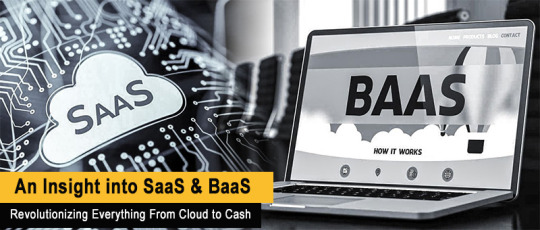
Digital transformation is no longer a buzzword. It has become a reality, a necessity. In this rapidly evolving technological landscape, businesses are tirelessly trying to remain agile, innovative, and customer-centric. In this endeavour, Software as a Service (SaaS) and Banking as a Service (BaaS) have emerged as powerful platforms, driving the next wave of the digital revolution.
What is SaaS?
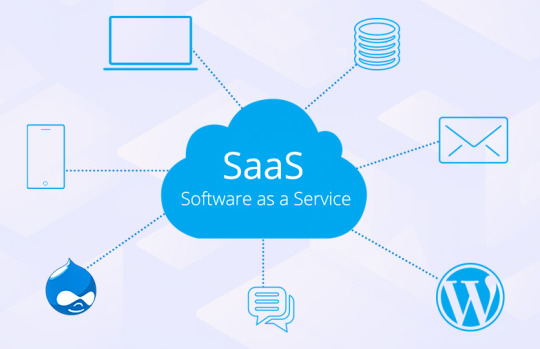
Software as a Service (SaaS), is a kind of cloud computing that provides users with access to software applications over the Internet. These applications are hosted on a cloud and managed by the service provider, relieving users from the need to install, manage, or update the software on their local servers or computers.
Why is SaaS the Future and Why is it Used?
The potential of SaaS stretches far beyond ease of use. By eliminating the need for hardware acquisition, provisioning, and maintenance, it significantly reduces upfront costs. Flexible payments make it an affordable solution for businesses of all sizes. It also provides scalable usage, allowing companies to scale up or down based on their requirements.
Moreover, automatic updates ensure users always have access to the latest features and security measures. Its accessibility from any internet-connected device makes it a perfect fit for today’s remote working culture. Given these advantages, it is no surprise that SaaS is being hailed as the future of software delivery.
SaaS Integration and the SaaS Business Model
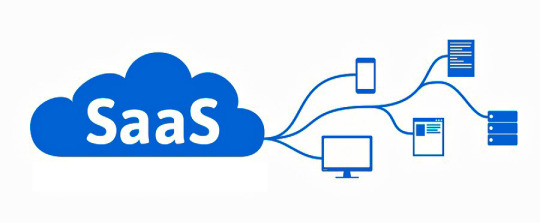
SaaS platforms are designed for seamless integration into the existing IT infrastructure. It enables businesses to focus on their core competencies, leaving software-related issues to the SaaS provider.
The SaaS business model primarily relies on subscription-based revenue, with clients paying a fixed amount periodically to access the service. This ensures a steady revenue stream for providers and makes budgeting easier for clients.
On-Premise Vs SaaS: Why SaaS is Superior?
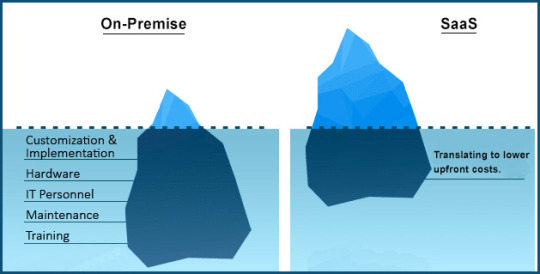
On-premise software comes with substantial initial costs, including hardware, software licenses, and installation, not to mention the ongoing costs of maintenance, updates, and IT staff.
SaaS, on the other hand, is subscription-based, translating to lower upfront costs. The fact that it is maintained by the service provider further eliminates the need for maintenance and IT staffing costs. Also, SaaS solutions are scalable, customizable, accessible from anywhere, and always up-to-date, making them the superior choice for most businesses.
SaaS Products and Companies we all know
The SaaS market is crowded with many players, each one offering its unique value proposition. Top global SaaS companies include Salesforce, known for its customer relationship management (CRM) software; Adobe, with its creative and multimedia software suite; Microsoft, offering a range of productivity tools and business solutions; and Google, with its robust G Suite of Office applications.
The Role of IaaS and PaaS along with SaaS
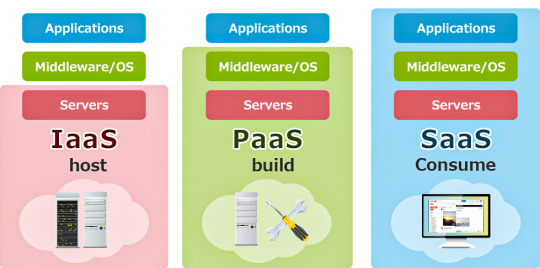
In the cloud computing realm, SaaS is one of the three primary service models, along with Infrastructure as a Service (IaaS) and Platform as a Service (PaaS).
IaaS virtualized computing resources over the internet. IaaS provides physical and virtual resources that are used to build a cloud. These resources include servers, network hardware, storage, and data center space. Users can rent these resources as per their needs, thereby saving on the capital expenditure that would have been incurred if they were to set up their own infrastructure. Amazon Web Services (AWS), Google Cloud Platform, and Microsoft Azure are some of the examples of Iaas.
PaaS delivers a platform for users to develop, run, and manage applications without the complexity of building and maintaining the infrastructure typically associated with application development. The PaaS provider manages the responsibility of housing the software and hardware components on their own infrastructural setup. As a result, developers can focus more on writing the code and the business logic, and less on managing hardware, software updates, and other routine IT management tasks. Examples of PaaS include Google App Engine, Heroku, and IBM Cloud Foundry.
SaaS delivers software applications over the web. IaaS provides virtualized computing resources over the Internet, and PaaS provides a platform for the creation and deployment of applications. Together, these models comprise the backbone of cloud computing, each serving distinct purposes but also complementing each other.
SaaS Uses in Different Sectors
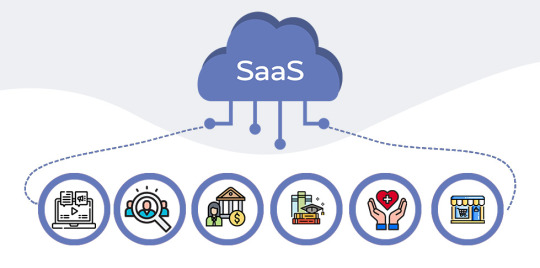
Digital Marketing
Marketing teams leverage SaaS to automate tasks, streamline workflows, create content and improve campaign effectiveness. SaaS tools assist in email marketing, social media management, customer relationship management (CRM), and various forms of analytical tracking. These tools enable marketers to measure campaign effectiveness, user engagement, and return on investment in real time.
Human Resource
HR professionals use SaaS for recruitment processes, streamline employee onboarding, assist in performance tracking, and even manage payroll. The advantage of these solutions lies in their ability to centralize data, allowing for seamless management and offering employees user-friendly self-service options. This promotes HR efficiency and boosts employee satisfaction.
Financial Sector
HR professionals use SaaS for recruitment processes, streamline employee onboarding, assist in performance tracking, and even manage payroll. The advantage of these solutions lies in their ability to centralize data, allowing for seamless management and offering employees user-friendly self-service options. This promotes HR efficiency and boosts employee satisfaction.
Education Sector
In education, SaaS facilitates online learning, course management, and collaboration among students and teachers. By providing extensive learning resources and a platform for interactive learning, SaaS tools enhance both teaching methodologies and the overall learning experience.
Healthcare
SaaS in healthcare provides numerous benefits, from improving patient care to optimizing operational processes. Electronic Health Records (EHR) systems, telehealth platforms, patient portals, and medical billing software are common SaaS applications in healthcare. They help streamline workflows, improve data accessibility, and ensure regulatory compliance.
Retail
In the retail sector, SaaS solutions offer a multitude of tools to improve both the customer experience and the retailer’s operations. E-commerce platforms, inventory management systems, Customer Relationship Management (CRM) tools, and analytics software are some of the SaaS solutions used in this sector. They help businesses optimize their supply chain, gain customer insights, and manage their online presence effectively.
What is BaaS?
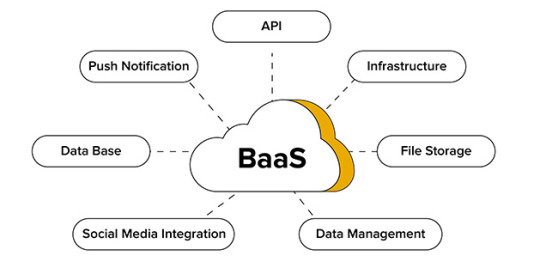
Banking as a Service (BaaS) is a model where financial services capabilities are provided over the Internet via APIs. With BaaS, fintech companies, retailers, and other businesses can integrate banking services into their own products, without the need to establish a full-fledged bank.
Why is BaaS the Future of Banking?
BaaS holds the promise of a more inclusive and innovative financial services sector. Enabling non-banks to offer financial services, encourages competition, promotes innovation and potentially leads to better services for consumers. As customer expectations evolve, the demand for integrated, seamless financial services will only grow, making BaaS an increasingly attractive proposition.
How Does BaaS Work and How is it Used?
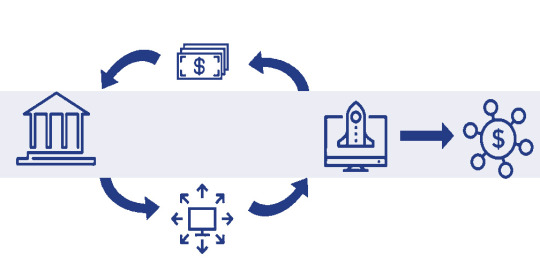
BaaS operates through APIs, which allow third parties to access banking services such as payments, transfers and account management on their platforms. Managed by a licensed bank, this infrastructure saves businesses from building complex banking functions from scratch.
Primarily utilized by fintech firms, BaaS facilitates services like digital wallets, payment gateways, and lending platforms. As we all know there is no finance without technology nowadays. This synergistic integration of existing platforms provides a smooth and convenient customer experience. Any business can leverage BaaS to integrate banking services, differentiate itself in the market, and enhance customer service.
BaaS Integration with Other Technologies
BaaS can be integrated with other technologies such as artificial intelligence, machine learning, and blockchain to offer advanced financial solutions. For example, AI can be used for personalized banking services, machine learning for predictive analysis in lending decisions, and blockchain for secure, transparent transactions. These integrations enhance the capabilities of BaaS platforms, opening up new paths for innovation.
The Intersection of SaaS and BaaS

SaaS and BaaS are both service-based models, delivering…..
To read the full article: https://dsb.edu.in/an-insight-into-saas-baas-revolutionizing-everything-from-cloud-to-cash/?utm_source=tumblr&utm_medium=tumblr&utm_campaign=Saas+and+BaaS
#ai#jobs#india#blockchain#chatgpt#gpt 4#fintech#education#google#banking#saas#saas technology#saasmarketing#saas solutions#b2b saas#automation#baas#financial#investing#finance
0 notes
Text
Salesforce Cloud Computing: Revolutionizing Business Operations
In today's fast-paced and interconnected digital world, businesses are constantly searching for innovative solutions to streamline their operations, improve efficiency, and drive growth. One such solution that has gained significant traction is Salesforce cloud computing. In this article, we will explore what Salesforce cloud computing is and how it works, empowering organizations to transform the way they manage customer relationships and revolutionize their business processes.
At its core, Salesforce is a cloud-based customer relationship management (CRM) platform that helps businesses of all sizes manage their interactions with customers and prospects. It provides a centralized hub where companies can store and access customer data, track sales opportunities, automate marketing campaigns, and provide exceptional customer service.
But what sets Salesforce apart is its cloud computing architecture. Unlike traditional software applications that require installation and maintenance on individual computers or servers, Salesforce operates entirely in the cloud. This means that users can access their Salesforce instance from any device with an internet connection, eliminating the need for costly infrastructure and ensuring seamless collaboration across teams and locations.
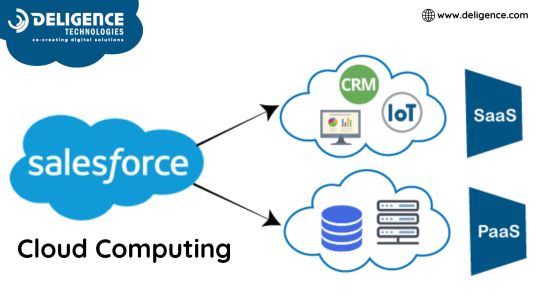
So, how does Salesforce cloud computing work? Let's break it down into three key components:
Infrastructure: Salesforce leverages a robust cloud infrastructure to host its CRM platform. This infrastructure consists of data centers located worldwide, equipped with cutting-edge hardware, secure networks, and redundant systems to ensure maximum uptime and data protection. This infrastructure is maintained and managed by Salesforce, allowing businesses to focus on their core activities without worrying about infrastructure maintenance or upgrades.
Platform: Salesforce provides a comprehensive platform that encompasses various cloud services tailored to specific business needs. These services include Sales Cloud, Service Cloud, Marketing Cloud, Commerce Cloud, and more. Each cloud service offers a set of tools and features designed to address specific business challenges. For example, Sales Cloud enables organizations to manage their sales pipelines, track leads, and automate sales processes, while Service Cloud empowers businesses to deliver exceptional customer support through various channels.
Software-as-a-Service (SaaS): Salesforce operates on a Software-as-a-Service model, meaning that businesses subscribe to the platform rather than purchasing and installing software licenses. This subscription-based model provides several advantages, including scalability, regular updates and enhancements, and simplified pricing structures. It also ensures that businesses always have access to the latest features and innovations without the hassle of manual upgrades.
With Salesforce cloud computing, businesses can unlock numerous benefits:
Centralized Data: Salesforce consolidates customer data into a single, unified platform, providing a 360-degree view of each customer. This enables businesses to better understand their customers' needs, personalize interactions, and build stronger relationships.
Automation and Efficiency: Salesforce automates repetitive and manual tasks, allowing teams to focus on high-value activities. Workflows, approval processes, and email automation streamline business processes, saving time and improving productivity.
Collaboration and Mobility: As a cloud-based solution, Salesforce enables teams to collaborate and access critical information from anywhere, at any time. This fosters seamless communication and empowers mobile workforces to stay connected and productive on the go.
Scalability and Flexibility: Salesforce scales with businesses as they grow. It offers customizable features and integrations with other systems, ensuring that organizations can adapt the platform to their specific requirements.
In conclusion, Salesforce cloud computing is revolutionizing the way businesses manage customer relationships and drive growth. By leveraging its cloud-based infrastructure, comprehensive platform, and Software-as-a-Service model, Salesforce provides a powerful and scalable solution for businesses of all sizes. With centralized data, automation, collaboration, and mobility, organizations can unlock their full potential and deliver exceptional customer experiences in today's digital age.
1 note
·
View note
Text
Sage Partner Summit 2023 — Get a Quick Peek at What Greytrix Has in Store for You!
Buckle up and be ready as a 3-day spectacle awaits to astound you with its magnificence. Yes, we’re talking about the Sage Partner Summit 2023. The event is all set to be hosted in Las Vegas and is going to be bigger and bolder than ever before.
And as the event is just around the corner, we give you a quick insight into what Greytrix will bring to bewitch you all.
Greytrix is a reputed Silver Sponsor and Sage Intacct implementation and consultation partner, having a rich experience of service of more than 23 years in the Sage Industry. We always look to help businesses leverage the power of Sage products through our experience and knowledge. As a result, we always look to proffer business solutions that are a perfect mix of technology, innovation, and adequate market research.
We are very much looking forward to marking our presence at Sage Partner Summit 2023 and giving our contribution to the Sage ecosystem. So, make sure to stop by Booth 109 for all the insights, discussions, and potential collaboration.

Our Team at Sage Partner Summit 2023
Our best thought leaders and techno-functional experts will be marking their presence at Sage Partner Summit as Greytrix representatives. So, make sure to visit our booth 109 and interact with them to learn about our products and solutions.

An Insight into What to Expect from Greytrix
GUMU™ — Our Champion Integrator- GUMU™ is our own SaaS-based native cloud connector that facilitates easy integrations. This champion integrator works on the concept of one-click integration with no data storage. It enables seamless ERP integrations with CRM, eCommerce, POS, FTP/SFTP, Payment Processes, Cloud Storage Apps, and other apps. GUMU™, the breakthrough integrator, also facilitates secure migration to help business switch to Sage X3, Sage Intacct, and Acumatica from Sage 100, Sage 50 (US & CA), Sage 300, and Quickbooks.
Sage Intacct — Implementation and Consultation Expert- We provide complete consulting for businesses across various verticals like Financials, Healthcare, SAAS, Distribution, Non-profits, Global Consolidation, Distribution, and others. We ensure a hassle-free go-live process by gathering requirements and accurate implementation. With a team of certified consultants and implementation experts, we offer the best-in-class assistance to businesses looking to adapt to Sage Intacct.
Sales Commission for Sage Intacct- Our Sales Commission for Sage Intacct is a highly-targeted solution aimed at simplifying and automating complicated commission structures, right from setting the structures to calculating commissions and making timely payments. The application is natively built on the Sage Intacct platform enabling seamless operations at all times!
15+ Robust Sage Intacct Integrations- We are a highly-rated Sage Intacct implementation and consultation partner. Using GUMU™ as an integration platform, we integrate Sage Intacct ERP with more than 15 third-party applications like eCommerce (Magento, Shopify, and WooCommerce), CRM (Salesforce, Dynamics 365 CRM, and Sage CRM), POS (Treez), Payment Processes (Checkbooks.io and MediusGo), FTP/SFTP (Blackline & FTP/SFTP), others (Rent Manager and Rev.io).
Salesforce Integrations- Greytrix is also a premium Salesforce Integration Partner offering a range of services, including development, integration, consulting, and more. We offer robust Salesforce integration solutions with ERPs like Sage Intacct, Sage X3, Sage 100, Sage 300, and Sage 50 US.
A Gamut of Products and Services- Our expertise lies not only in integrations but also in development, support, and migration. Besides, we cover a range of Sage products, including Sage Intacct, Sage X3, Sage 100, and Sage 300. Apart from this, we also have BPortaly, our own IP product that streamlines business workflows by allowing organizations to manage Customers, Suppliers, Sales Commissions, and Shipping. So, we invite you to visit our booth to learn about our expertise and assistance for you in detail.
With insightful sessions, interactive workshops, keynote speakers, and whatnot, Sage Partner Summit 2023 is a safe space for Sage partners, businesses, and customers to gain insights into the industry and crucial contributions from Sage representatives. Thus, we eagerly wait to participate in the event and meet you all.
We request you book your appointment to meet or write us at [email protected] .
For any other queries, feel free to contact us at 1 888 221 6661.
Let’s meet, connect, and collaborate!
Originally Published by https://www.greytrix.com/ on 26-05-2023
0 notes